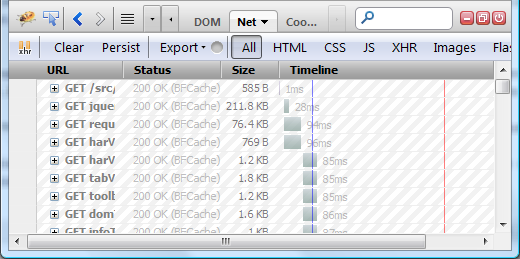Firebug's Net panel offers an option called Show BFCache Responses that allows tracking also responses coming from BFCache. But what the heck is this cache for?
Read this post to understand how this cache is different from the standard browser cache and why Firebug supports it.

See all Firebug tips
What is BFCache?
BFCache stands for back-forward cache. See the description taken from MDN:
Firefox uses in-memory caching for entire Web pages, including their JavaScript states, for a single browser session. Going backward and forward between visited pages requires no page loading and the JavaScript states are preserved. This feature, referred to by some as bfcache (for "Back-Forward Cache"), makes page navigation very fast. This caching state is preserved until the user closes the browser.
From the network perspective, this means that the server is not even asked whether to load the request from the cache since the round trip would slow things down. And this cache is all about fast page load.
BFCache in Firebug
If you want to track also FBCache responses in Firebug's Net panel you need to set the Show BFCache Responses on. It's off by default in Firebug 1.10 since BFCache responses are not involving HTTP traffic over the wire.
BFCache responses are visually different from other requests by using different background and a label in the Status column.

All the responses on the screenshot are coming from BFCache.
You can simply test this by using back-and-forward buttons while having Firebug's Net panel enabled.